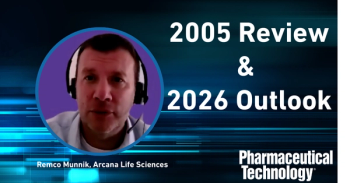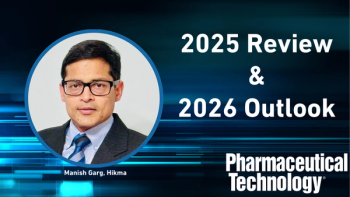
- Pharmaceutical Technology, June 2021 Issue
- Volume 45
- Issue 6
Prioritizing Cleaning Validation
As recent COVID-19 vaccine facility citations make clear, failure to meet cleaning and sanitization requirements puts patients, facilities, and operators at risk.
Keeping pharmaceutical facilities clean and germ free seems an obvious prerequisite for any company that manufactures medicines. However, regulatory citations suggest that pharmaceutical manufacturers and contract manufacturing and
development organizations (CDMOs) may take cleaning and cleaning validation for granted.
An April 2021 Form 483 issued by FDA to the Maryland-based CDMO, Emergent Biosolutions, which is under contract to Johnson & Johnson (J&J) and AstraZeneca to manufacture their COVID-19 vaccines, showed how deeply rooted this problem may be (1). J&J and AstraZeneca use very different manufacturing processes, but both involve the use of viral vectors.
FDA inspectors found fundamental deviations from good manufacturing practices (GMPs) at the facility. Among the observations noted were failure to maintain clean and sanitary conditions; lack of written procedures for cleaning and decontamination of the vessels used to transport and store materials at the site; and no formal requirements to clean and sanitize these vessels after each use.
In addition, no tests were conducted to determine how long viruses used in a client’s production process remained viable on equipment surfaces in one area within the facility.
Casting the first stone?
If these omissions seem basic, it might be helpful to remember that in pre-pandemic 2019, the last full year when FDA performed routine site inspections, roughly 60% of FDA 483 regulatory observations involved deficiencies in cleaning and sanitization and their validation.
This fact was presented by Matt Cokely, senior global technical consultant manager for Ecolab Life Sciences in a best-practices webinar presented by the International Society for Pharmaceutical Engineering (ISPE) on April 9, 2021 (2). The most often cited problems, he said, were the lack of procedures for preventing contamination, deficiencies in cleaning, failure to keep cleaning records, and inadequate standard operating procedures (SOPs).
Cleaning validation consultant Rich Forsyth agrees. “Problems often boil down to a failure to follow cleaning procedures. Either people are doing something that is not in the SOP or there’s something in the SOP that they aren’t doing,” he says. For example, Forsyth notes, many procedures fail to specify cleaning frequency, or the amount of time that should be spent to clean a piece of equipment using documented procedures and materials. This forces operators to take the unprovable position that ‘it’s not clean until it’s clean’, he says.
Active training needed
Cleaning and cleaning validation practices need to be reproducible, Cokely noted, and employees must be trained, not only in the basics of microbiology and hygiene pertaining to cleaning, but in cleanroom procedures and gowning and in understanding potential risks and safety hazards. “They need to understand not just how, but why they are performing a task, and to be trained to actually perform it,” he said, rather than simply being given a pile of SOPs to read and sign off on. Given the trend to outsource cleaning and sanitization activities, Cokely noted, this training must be given to contract cleaning workers as well.
Elaborating further, Cokely noted that written instructions in SOPs should specify who is responsible for the duties, and set a schedule of frequency for cleaning, describe the materials and techniques to be used in detail, and the preparation and storage of cleaning materials. In addition, documentation must include the names and signatures of staff performing the work, as well as the product batch number, cleaner expiry date, and disinfectants used. Cokely also noted that disinfectants with different modes of action should be rotated. Care must also be taken, he said, to avoid interactions between different cleaning chemistries that might inhibit microbe-killing mechanisms and promote the buildup of cleaning solution residues.
The basic problem, Cokely noted on the webcast, is that cleaning and disinfection are undervalued in the pharmaceutical industry, despite their importance to patient and overall safety. “At some companies, cleaning procedures have been used for years, or the facility may have inherited practices that have never been reviewed or scrutinized,” he said.
Regulations for cleaning and its validation abound, supplemented by best practices circulated by ISPE, the Parenteral Drug Association (PDA), and now the American Society for Testing and Materials (ASTM), which has set standards for pharmaceutical cleaning operations and validation. Risk-based standards for cleaning validation, set in 2018 (3) began to establish a more scientific basis for practices at individual facilities.
These standards have had a positive impact, notes Forsyth, getting pharmaceutical companies to go beyond thinking simply about products, equipment, and detergents in their cleaning operations. “Risk-based standards forced people to formalize their risk assessments. Many of them began to consider peripheral risks that they hadn’t factored in before, such as the air-handling system’s impact or the material and equipment traffic in the facility,” he says.
However, in the end, some companies may view having a formal cleaning validation program and strategy as involving too much work. “Companies pay a lot of attention to their cleaning and cleaning validation programs when they get cited by regulators for those programs’ failings,” Forsythe says. But establishing a program or updating one that hasn’t been reviewed in several years, takes commitment, he notes, and it generally requires a year to do because everyone has their regular jobs to do, too. “Often, shepherding a cleaning validation project through to its end becomes more problematic the longer the projects continue. At many companies the success or failure of a cleaning and cleaning validation program may rest on one champion supporting it,” Forsyth says.
Multiproduct facility challenges
Today, multiproduct facilities, and particularly biopharmaceutical facilities, pose several cleaning validation challenges, Forsyth notes. “You worry more about bioburden in a biological plant than in a small-molecule facility, but generally if you have an effective cleaning validation program, you’re fine,” he says.
However, setting cleaning limits can be tricky because traditional methods fail to consider some of the most significant differences between biopharma and small-molecule facilities. “The most notable difference between the two types of plants is that biopharmaceutical facilities start processes using equipment with large surface area but generate small batches, both of which require the use of lower cleaning limits, so if you use the entire equipment train, your limits may, at first, appear to make no sense,” Forsyth says. Single-use systems and equipment have eliminated some of those problems, but they persist for hybrid plants still using stainless steel equipment.
Another question is how batches are finished and whether pre-cleaning equipment preparation processes are consistent from one batch to another. If they are not, varying amounts of product may be left on equipment surfaces after each run. “Some types of equipment will empty completely, but others won’t,” Forsyth says.
He recalls one of his first experiences working on cleaning validation in a pharmaceutical development lab. “We were concerned about pouring active ingredients down the drain, so we wound up scraping equipment and then vacuuming it before cleaning. By the time we started cleaning that equipment, it was almost visually clean,” he says, noting that this type of approach reduces the risk of cleaning failures and compliance problems. At some companies, varying amounts of material may be left on the equipment when cleaning officially begins.
Other CDMO challenges
CDMOs that focus on clinical trial drug manufacturing face unique challenges in setting cleaning limits. “For clinical operations, you are not making a lot of batches of the same thing, so you don’t make enough batches of any single product to validate the cleaning methods using standard approaches,” says Forsyth. “In this case, it is usually best to work with a more general model, establish a worst case, and then evaluate each new product coming in. However, this approach increases the effort and justification required to maintain the model, and a lot of CDMOs don’t do this very well,” says Forsyth.
Specific approaches are needed to prevent cross-contamination in multiproduct facilities, Forsyth says. “Best practices call for calculating the amount of residue that can safely be carried over for every product. For a multiproduct facility that makes 10 products, that means calculating the limit of one product versus those of the other nine, taking the lowest number and then using that, and then following the same procedure for the rest of the products,” he says.
Statistics and instrumentation
ASTM standards have been focusing on use of statistics, which are important after a cleaning program has been validated and needs to be maintained, says Forsyth. Maintenance requires trending data. “The basic statistics needed for trending are fairly straightforward, and more advanced statistics can also be applied, but it has been difficult to motivate some companies to do that in the current environment,” he says.
More work is also being done to use analytical methods to reduce the subjectivity of visual inspection, but Forsyth hasn’t seen any consistently effective methods coming into general use. The best way to remove subjectivity from inspections has been to qualify those who must perform those inspections, a step that most regulatory agencies now require.
“I advise clients to set visual limits for residues and have staffers who might be assigned to perform visual inspections go through specialized training to recognize clearly what various levels of residues look like on equipment, compared with images of surfaces with residues that meet safe carryover limits. It’s important to have exercises in place that will allow people to visually recognize cleanliness levels to avoid patient safety risks,” Forsyth says.
Cleaning is not a popular activity, Cokely noted in his presentation, but it is essential. Taking cleaning and sanitization validation programs for granted only puts facilities and people at risk and increases the likelihood of costly noncompliance.
References
1. FDA, Form 483, Emergent Biosolutions, FDA.gov, April 20, 2021.
2. ISPE, “Regulatory Requirements and Expectations for Cleaning and Disinfection of Controlled Manufacturing Areas,” Webcast, April 9, 2021.
3. ASTM, E3106-18e1, Standard Guide for Science-Based and Risk-Based Cleaning Process Development and Validation (2018).
About the Author
Agnes Shanley is the former senior editor for Pharmaceutical Technology.
Article Details
Pharmaceutical Technology
Vol. 45, No. 6
June 2021
Pages: 44–46, 52
Citation
When referring to this article, please cite it as A. Shanley, “Prioritizing Cleaning Validation,” Pharmaceutical Technology 45 (6) 2021.
Articles in this issue
over 4 years ago
New Biotherapies Push Technological Innovation Forwardover 4 years ago
Assessing Risk and Production of Potent Substancesover 4 years ago
Moving Beyond Particle Size Controlover 4 years ago
Cleaning Continuous Manufacturing Equipmentover 4 years ago
Considering Robotics for Drug Compoundingover 4 years ago
Considerations for Cleaning Biopharmaceutical Process Equipmentover 4 years ago
Navigating International Pharmacovigilanceover 4 years ago
Developing a Method for Success through Partnershipsover 4 years ago
Pandemic Highlights Need for Advanced Pharma ManufacturingNewsletter
Get the essential updates shaping the future of pharma manufacturing and compliance—subscribe today to Pharmaceutical Technology and never miss a breakthrough.




